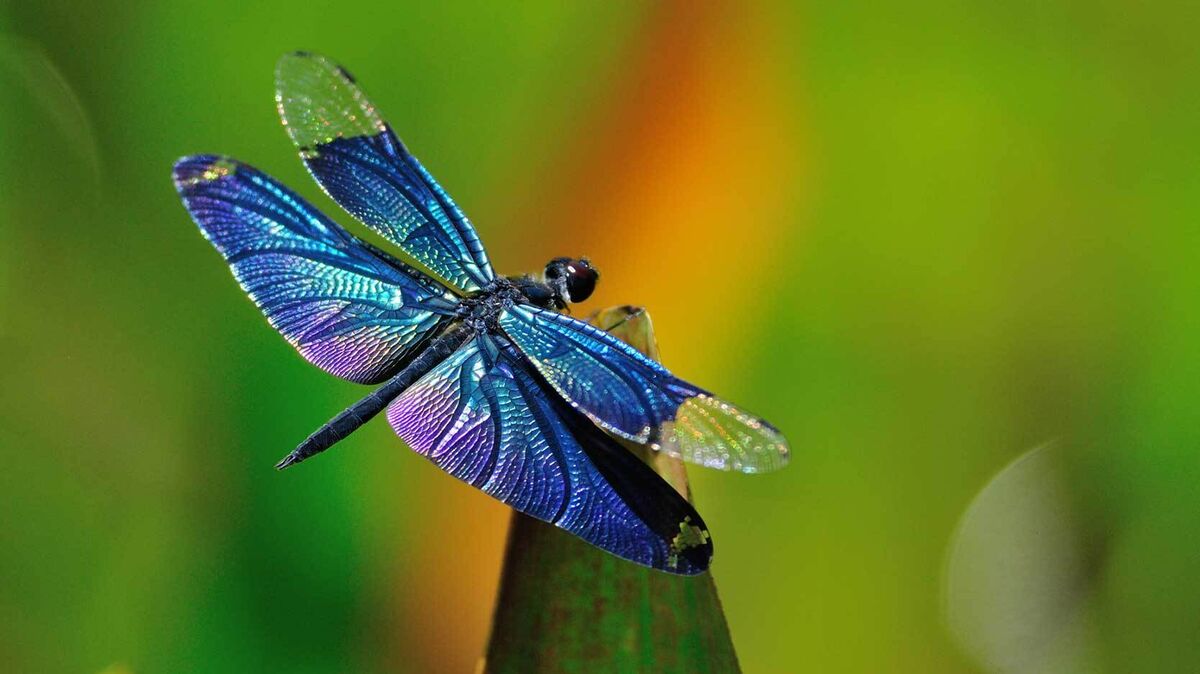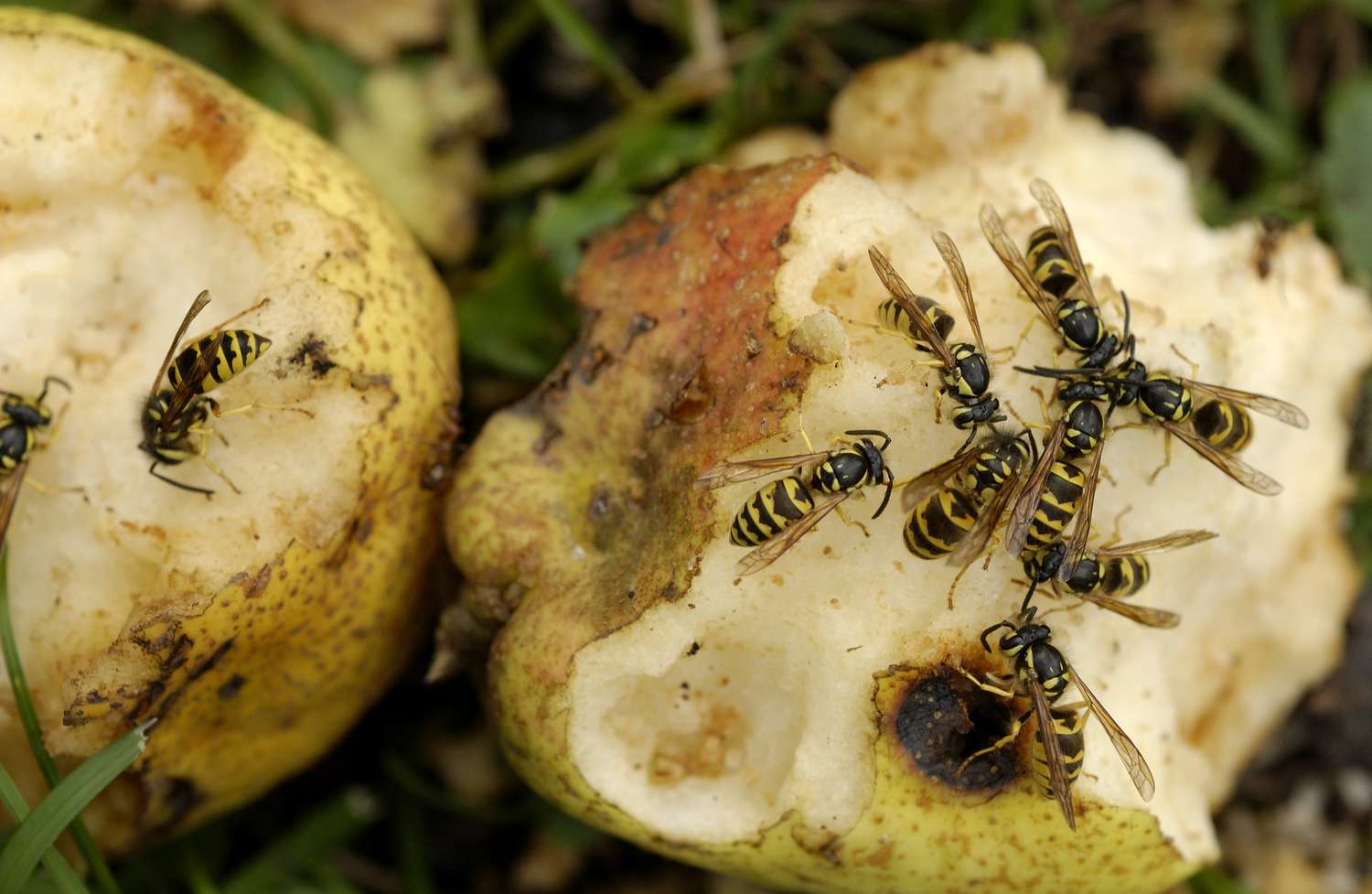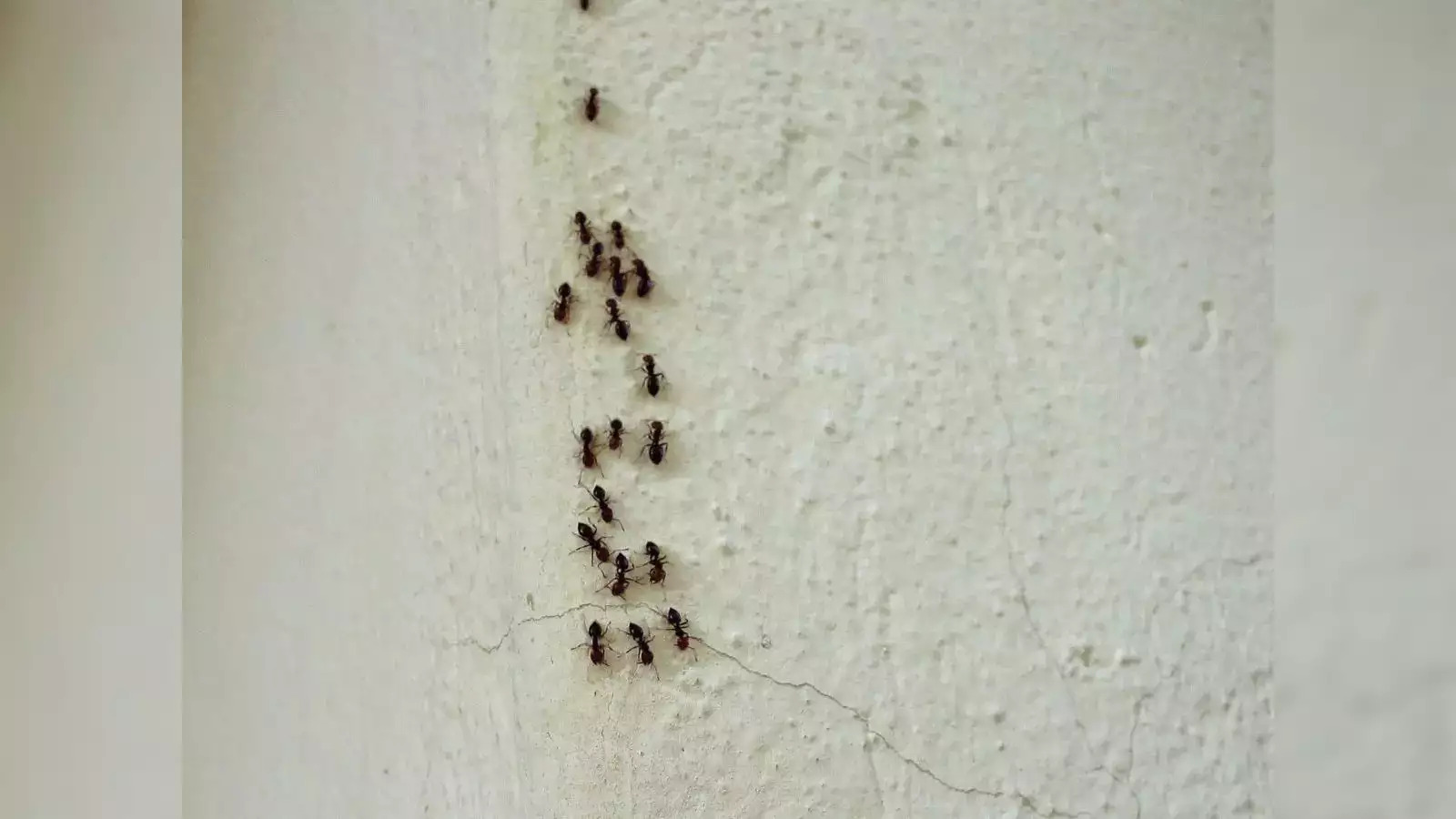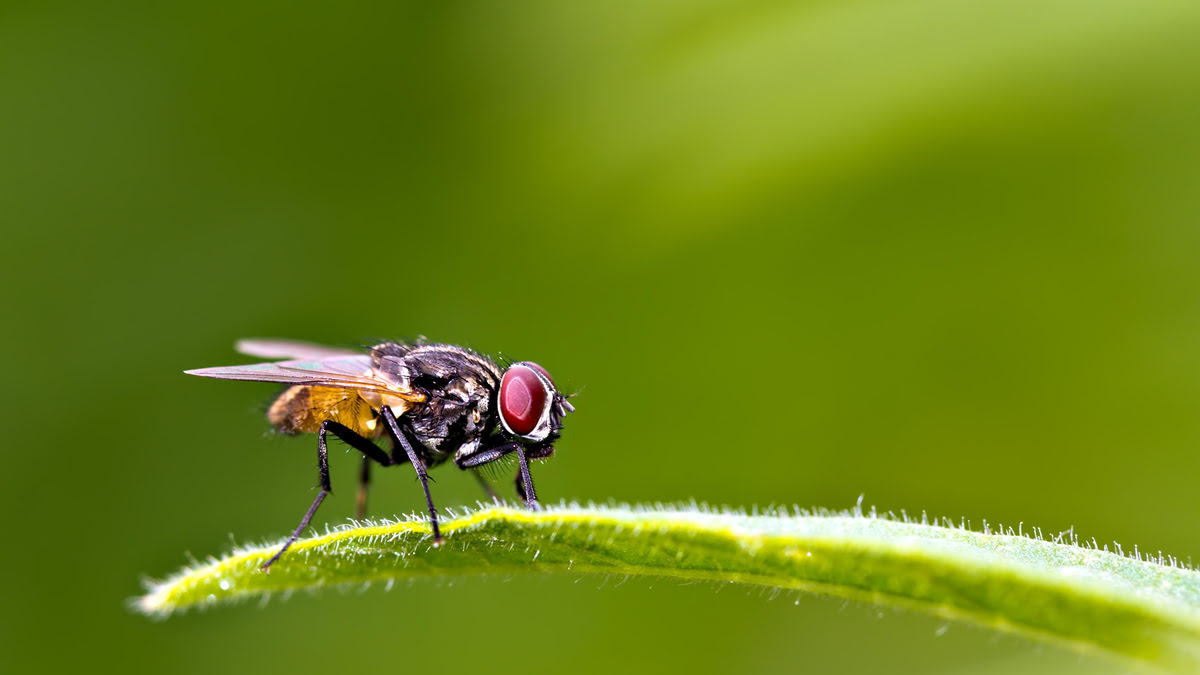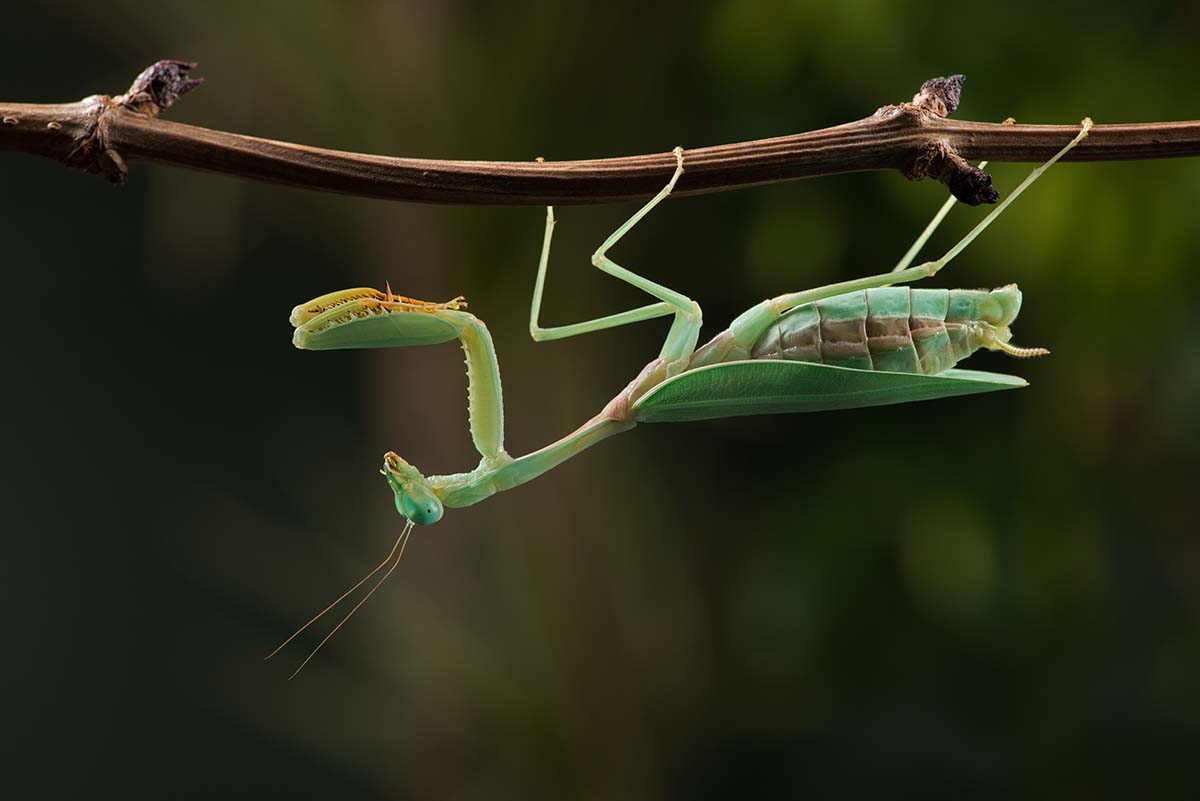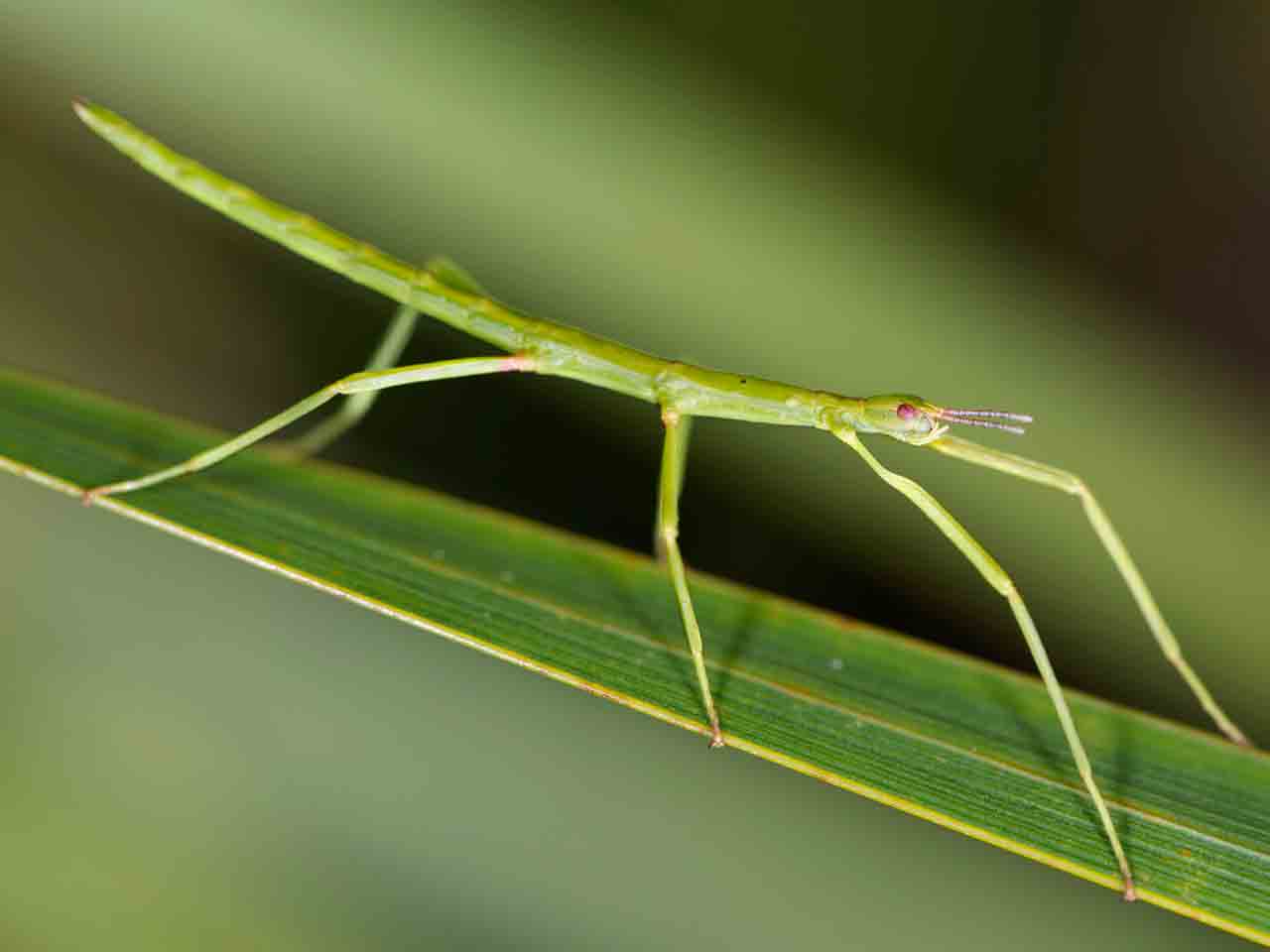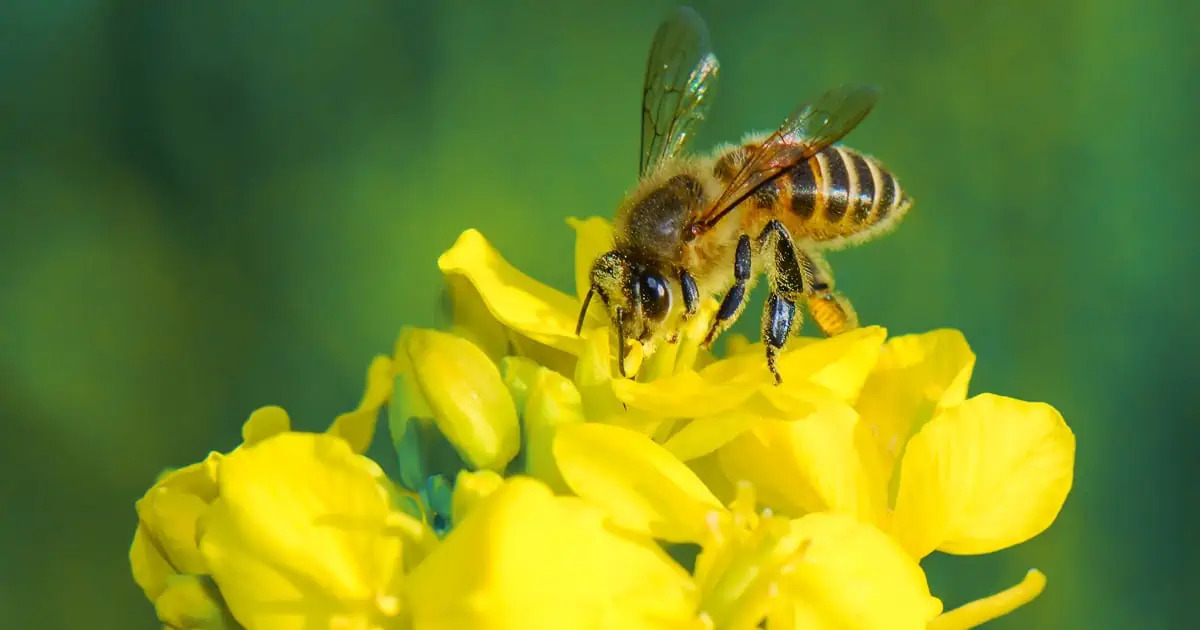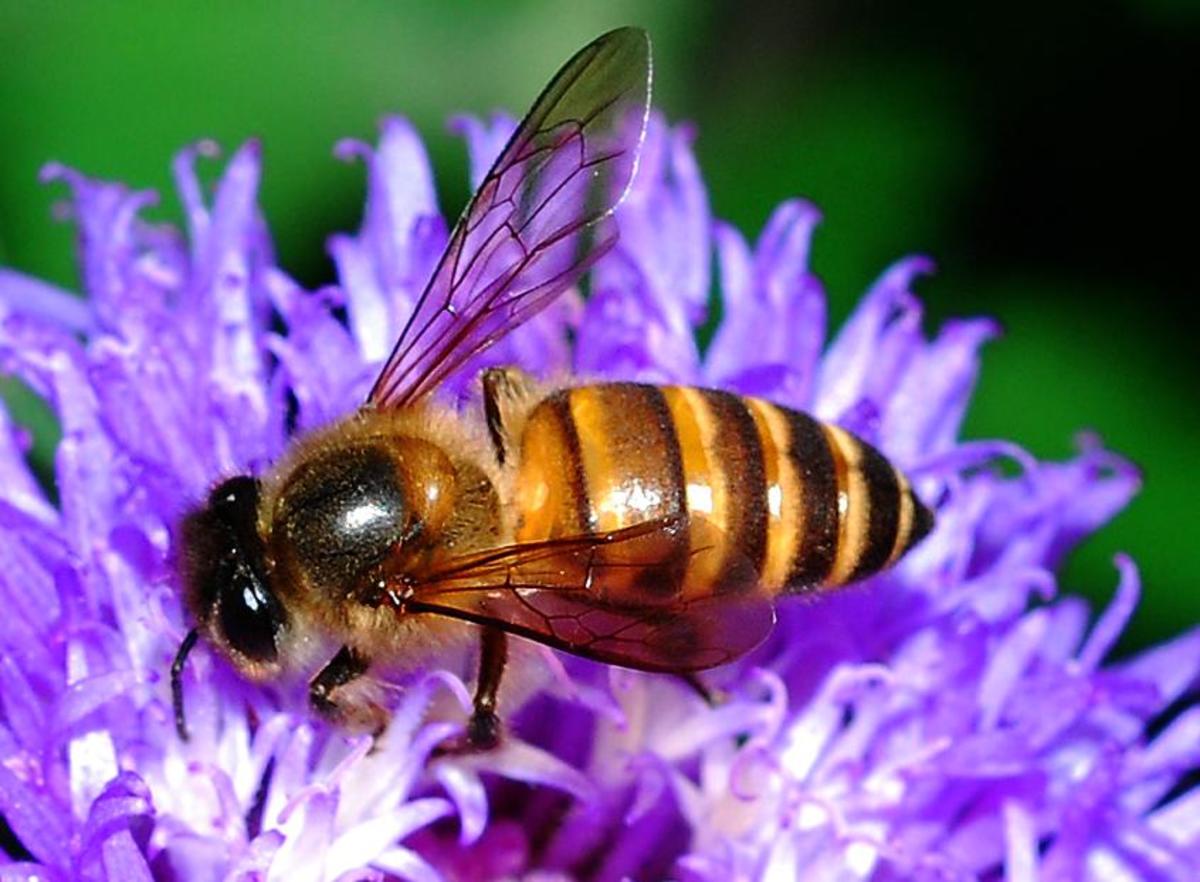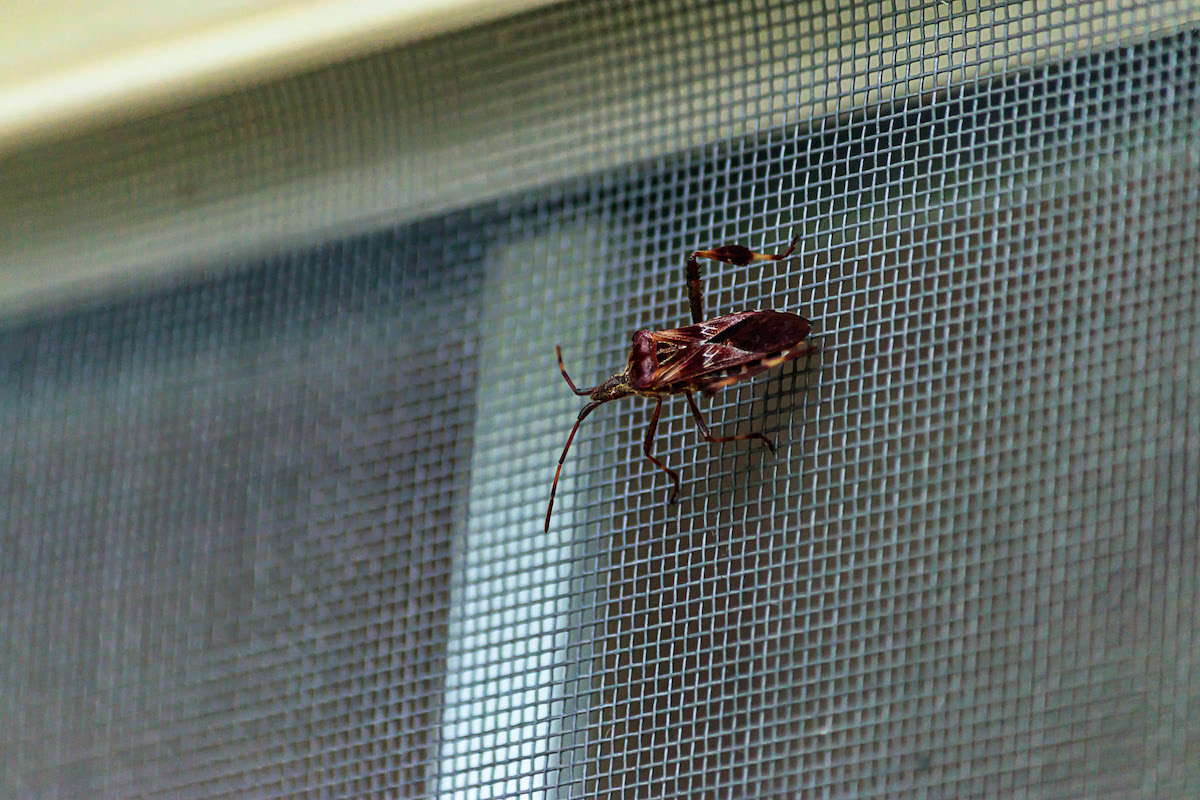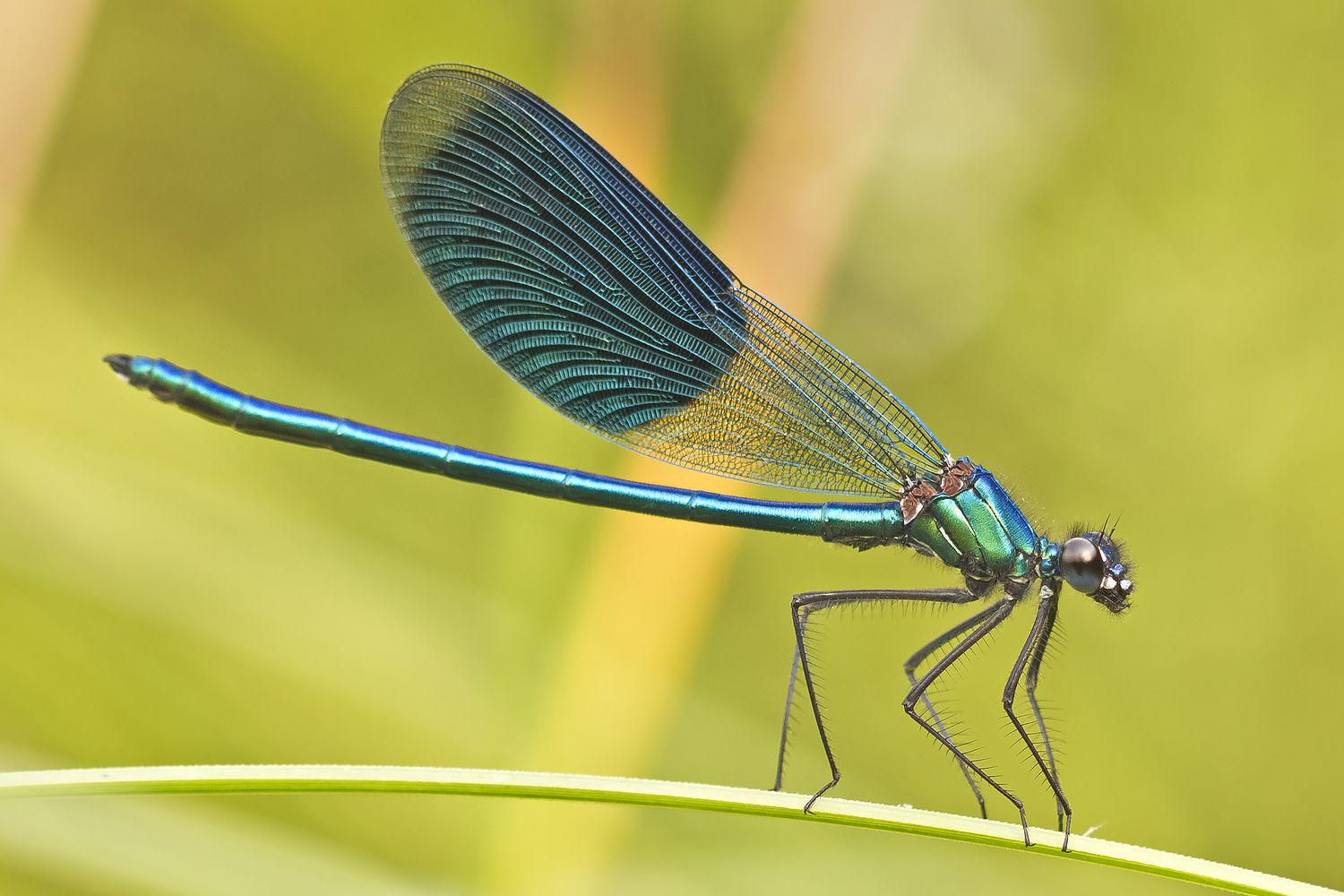Home>Gardening News and Trends>Latest News>How Do Insects Think
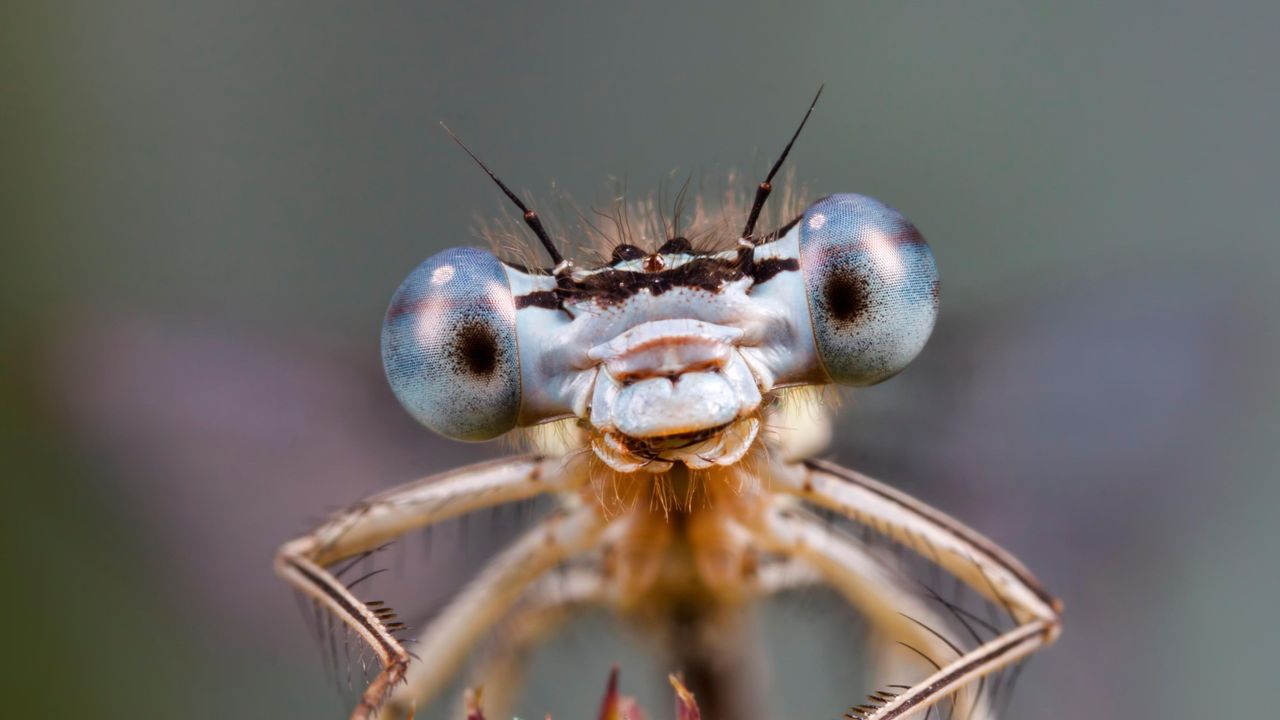

Latest News
How Do Insects Think
Published: November 29, 2023
Discover the Latest News on How Insects Think
(Many of the links in this article redirect to a specific reviewed product. Your purchase of these products through affiliate links helps to generate commission for Chicagolandgardening.com, at no extra cost. Learn more)
Table of Contents
Introduction
Insects, with their diverse forms and astonishing behaviors, have long captivated the curiosity of scientists and the general public alike. These remarkable creatures, despite their minute size, have proven to possess astonishing cognitive abilities that enable them to navigate their complex environments, communicate with each other, and solve problems in surprising ways. In this article, we will delve into the fascinating world of insect cognition, exploring how these tiny organisms process information, make decisions, and interact with their surroundings.
While insects may lack the complex brains of mammals, their cognitive prowess is undeniable. Through a combination of instinctual behaviors and learned responses, insects demonstrate a remarkable ability to navigate their surroundings, find food sources, and avoid dangers. In recent years, advancements in scientific research, particularly in the field of neuroscience, have shed new light on the inner workings of insect brains, revealing intricate neural networks that contribute to their cognitive abilities.
One key aspect of insect cognition is sensory perception. Insects have specialized sensory organs that allow them to detect various stimuli in their environment, such as odors, vibrations, and visual cues. These sensory inputs are then processed by their miniature brains, enabling them to make sense of their surroundings and respond accordingly. The range and sensitivity of insect senses vary across different species, with some insects possessing highly specialized sensory capabilities, such as the ability to detect pheromones or ultraviolet light.
Another fascinating aspect of insect cognition is their capacity for learning and memory. While insects may not have the same level of cognitive flexibility as humans, they are capable of forming associations between stimuli and outcomes through a process called associative learning. Bees, for example, can learn to associate specific flower colors with nectar rewards, enabling them to efficiently forage for food. This ability to learn from past experiences and adjust their behavior accordingly is crucial for survival and adaptation in changing environments.
Problem-solving is yet another area where insects exhibit impressive cognitive abilities. From constructing intricate nests to figuring out novel ways to access food sources, insects showcase their adaptability and ingenuity when faced with challenges. Ants, for instance, demonstrate remarkable collective problem-solving skills when foraging for food or defending their colonies, employing sophisticated communication and coordination strategies.
In addition to their individual cognitive capacities, many insects also engage in complex social interactions within their colonies or hives. These social insects, such as bees or ants, exhibit sophisticated communication and division of labor, enabling them to accomplish tasks that would be impossible for any individual alone. By working together and sharing information through pheromones, sound signals, or visual cues, social insects showcase the power of collective intelligence and cooperation.
Understanding the cognitive processes of insects not only provides us with valuable insights into the workings of these incredible creatures but also has implications for various fields. Studying insect cognition can inform bio-inspired technologies, improve pest control strategies, and enhance our understanding of fundamental principles of learning, memory, and decision-making.
In the following sections, we will delve deeper into the structure and function of insect brains, explore their sensory perception abilities, dive into their learning and memory capabilities, examine their problem-solving skills, discuss social interactions among insects, and unravel the intricate processes involved in insect decision-making. Together, these insights will shed light on the fascinating world of insect cognition and revolutionize our understanding of these remarkable organisms.
Insect Brains: Structure and Function
Although insect brains are much simpler in structure compared to the complex brains of mammals, they are remarkably efficient at processing information and coordinating behaviors. Insects possess a centralized nervous system, consisting of a brain and a ventral nerve cord that extends throughout their body.
The insect brain is composed of different regions, each with its own specialized function. The largest part of the insect brain is the protocerebrum, which is responsible for processing visual stimuli and controlling complex behaviors. This region integrates visual information from compound eyes and processes it to guide navigation, object recognition, and predator avoidance.
Another important region of the insect brain is the deutocerebrum, which is involved in processing olfactory information received from the insect’s antennae. Insects have specialized chemoreceptors that allow them to detect and discriminate between different odors in their environment. This information is crucial for locating food sources, identifying mates, and avoiding potential dangers.
In addition to the protocerebrum and deutocerebrum, the insect brain also contains the tritocerebrum, which plays a role in sensory integration and motor control. This region receives and processes information from other sensory organs, such as the legs and mouthparts, and coordinates motor responses accordingly.
Despite their relatively small size, insect brains exhibit impressive functional organization. Neurons within these brain regions form complex networks, allowing for rapid and efficient processing of sensory inputs and generation of appropriate behavioral responses. The connectivity of these networks is crucial for coordinating various behaviors, such as flight, foraging, and mating.
Interestingly, while insect brains have fewer neurons compared to mammals, they often demonstrate remarkable computational abilities. Certain insects, such as bees or ants, can perform intricate navigation tasks, remember complex routes, and communicate detailed information about food sources to their nestmates. These impressive cognitive feats are achieved through the integration of sensory information, memory recall, and efficient decision-making within the relatively small insect brain.
Studying the structure and function of insect brains not only provides insights into the cognitive abilities of these fascinating creatures but also has practical applications. Researchers are exploring ways to leverage the efficiency and computational power of insect brains for the development of bio-inspired technologies. By understanding the mechanisms underlying insect brain function, scientists can inspire the design of autonomous robots capable of tasks such as navigation, object recognition, and problem-solving.
Despite their apparent simplicity, insect brains are marvels of evolutionary adaptation, allowing these creatures to survive and thrive in diverse environments. The intricate organization and efficiency of insect neural networks provide a foundation for their impressive cognitive abilities and highlight the complex interplay between genetics, environment, and behavior. Further research in this field promises to unravel more mysteries of insect brains and open up new possibilities for innovation and technological advancement.
Sensory Perception in Insects
Insects rely on their sensory perception to navigate their environment, locate food sources, communicate with conspecifics, and avoid predators. Despite their small size, insects possess an impressive array of sensory organs that allow them to detect and interpret various stimuli in their surroundings.
Visual perception plays a crucial role in the lives of many insects. Insects have compound eyes, which are composed of multiple individual lenses called ommatidia. Each ommatidium captures a small portion of the visual field, and the combined inputs from multiple ommatidia provide insects with a mosaic-like view of the world. This visual system allows insects to detect movement, recognize shapes and patterns, and distinguish between colors. Some insects, like bees, can even see ultraviolet light, which is invisible to humans, enabling them to locate nectar guides in flowers.
In addition to vision, insects possess a highly developed sense of smell. Their antennae are equipped with olfactory receptors that can detect a wide range of chemical compounds. This sense of smell allows insects to find food, locate mates, detect pheromones, and avoid harmful substances. For example, mosquitoes are highly attracted to the carbon dioxide emitted by humans, which helps them locate and feed on their blood hosts.
Tactile perception is also crucial for insects. Sensory hairs, called setae, cover their bodies, antennae, and mouthparts. These setae detect vibrations, touch, and air currents, allowing insects to navigate their environment and detect potential prey or predators. For example, mosquitoes use tiny hairs on their antennae to sense the movement of a potential blood host and guide their approach for a successful bite.
Sound perception is another sensory modality used by many insects. While they may not have external ears like mammals, insects can detect and produce sounds using specialized structures. Crickets, for instance, produce rhythmic chirps to attract mates, while some moths use ultrasonic signals to communicate with each other. By vibrating their wings or other body parts, insects can create sounds that serve various functions, from courtship to territorial defense.
Chemical communication, through the use of pheromones, is an important sensory modality for many insects. Pheromones are chemical substances produced by insects to influence the behavior of other individuals of the same species. They can be used for various purposes, including attracting mates, marking territories, or signaling alarm. Ants, for example, communicate using pheromones to establish trails, coordinate foraging activities, and signal the presence of danger.
Understanding the sensory perception of insects provides valuable insights into their behavior and ecology. It helps explain how insects locate resources, communicate, and avoid potential threats in their environment. Furthermore, this knowledge has practical applications in agriculture and pest control. By understanding the sensory preferences of pests, scientists can develop targeted strategies to disrupt their sensory perception and reduce their impact on crops.
Insects are masters of sensory perception, utilizing their compound eyes, sensitive antennae, tactile setae, sound receptors, and chemical detectors to gather information from their surroundings. This diverse array of sensory modalities equips them to thrive in a wide range of habitats and perform complex behaviors. Further research in this field promises to unveil even more remarkable aspects of insect sensory perception and inspire innovative solutions to real-world challenges.
Learning and Memory in Insects
Insects may have small brains, but they are certainly not lacking when it comes to learning and memory abilities. These remarkable creatures demonstrate the capacity to acquire and retain information, enabling them to adapt their behaviors and increase their chances of survival.
One fundamental form of learning observed in insects is associative learning. This type of learning involves forming associations between stimuli and outcomes. For example, bees can learn to associate specific floral scents with a reward of nectar, allowing them to efficiently locate and collect food. This form of learning enables insects to make predictions based on past experiences and adjust their behaviors accordingly.
Insects also exhibit habituation, which is the ability to reduce or suppress responses to repeated, irrelevant or harmless stimuli. For instance, certain insects, such as fruit flies, can habituate to repetitive visual or auditory stimuli that are not associated with any meaningful consequences. This allows them to filter out irrelevant information and focus on more critical sensory inputs.
Another fascinating aspect of insect learning and memory is their ability to perform complex navigational tasks. Some insects, like bees, are capable of path integration, also known as dead reckoning. This means they can continuously update their position and orientation relative to a starting point, using information from their surroundings such as landmarks or the position of the sun. This remarkable spatial memory enables them to navigate accurately even in complex environments.
Long-term memory is another crucial aspect of insect cognition. Insects can store and retrieve information over extended periods of time, allowing them to remember past experiences and apply this knowledge to future situations. This form of memory is especially important for behaviors that require long-term retention, such as migration, hibernation, or seasonal timing.
Furthermore, social insects, like ants or honeybees, utilize a form of collective memory known as swarm intelligence. These colonies can collectively learn and communicate information about food sources or nest locations. For example, honeybees perform “waggle dances” to convey the location and quality of nearby foraging sites to their fellow nestmates.
Research has shown that certain neurotransmitters, such as dopamine and octopamine, play a crucial role in insect learning and memory. Manipulating these neurotransmitter systems in experiments has demonstrated significant effects on learning and memory formation in insects.
Understanding how insects learn and remember not only provides insights into the cognitive abilities of these tiny creatures but also has practical applications. Researchers are studying insect learning behavior to develop novel pest control strategies that exploit their learning and memory processes. By manipulating their associative learning or disrupting their navigational abilities, scientists aim to develop more effective and environmentally friendly methods of pest management.
In summary, insects may have small brains, but their capacity for learning and memory is far from insignificant. Their ability to form associations, habituate to irrelevant stimuli, navigate accurately, and exhibit collective memory showcases the intricate cognitive abilities of these remarkable creatures. Further exploration of the mechanisms behind insect learning and memory promises to unravel more fascinating insights into the world of insect cognition and inspire innovative solutions for a variety of fields.
Problem-Solving Abilities of Insects
Insects may have tiny brains, but they have proven themselves to be proficient problem solvers. From constructing intricate nests to finding innovative ways to access food sources, these remarkable creatures showcase their adaptability and ingenuity when faced with challenges.
One remarkable example of insect problem-solving is evident in the construction of complex nests or burrows. Bees, for instance, display impressive architectural skills when building their intricate hexagonal honeycombs. They use their knowledge of angles and space optimization to create the most efficient structure for storing honey and rearing their brood. Similarly, ants are master tunnel diggers, creating elaborate underground networks with various chambers for different tasks.
Insects also exhibit ingenuity in accessing food sources that may be hidden or protected. For instance, some species of birds require cracking open nuts to access the nutritious meat inside. Certain wasps have learned to use tools, such as small pebbles or twigs, to hold the nut in place while they extract the contents. This behavior demonstrates the ability of insects to innovate and adapt their natural behaviors to overcome obstacles.
Refining foraging strategies is another problem-solving capability observed in insects. For example, certain species of bees are known for employing a technique called “trap-lining.” They memorize a series of flower patches and the most efficient routes between them, optimizing their foraging efforts. This ability to systematically plan and optimize their search for food resources is critical for maximizing their energy gain while minimizing their energy expenditure.
Social insects, such as ants or termites, often display collective problem-solving abilities. They can work together to overcome challenges that would be impossible for any individual alone. Ants, for example, form elaborate trails to efficiently transport food back to their nest, utilizing a decentralized decision-making process that allows them to adapt and find the most efficient routes based on the changing environment.
This problem-solving prowess is not limited to immediate challenges in the physical environment. Insects also exhibit adaptability in response to changes in their social interactions. For example, bees can adjust their foraging behavior based on the demand within their colony. If there is a scarcity of food resources, bees will increase their foraging efforts, while if food is abundant, they will reduce their foraging activity. This flexibility demonstrates their ability to adapt their behavior to changing circumstances.
Researchers have also discovered that insects can learn from observing and imitating the behavior of others. For instance, bumblebees can learn to pull strings to obtain rewards by observing a knowledgeable bee demonstrating the behavior. This ability to acquire new skills through observation and imitation highlights the cognitive flexibility and problem-solving abilities of insects.
Studying the problem-solving abilities of insects not only helps unravel the sophisticated cognitive processes that underlie their behaviors but also holds promise for practical applications. A better understanding of insect problem-solving can inspire the development of innovative solutions in fields such as robotics, optimization algorithms, and even architecture.
In summary, the problem-solving abilities of insects serve as a testament to their adaptability, ingenuity, and cognitive flexibility. Whether it’s constructing intricate nests, accessing hidden food sources, optimizing foraging strategies, or engaging in collective problem-solving, insects continually demonstrate impressive problem-solving skills. Further exploration of their problem-solving behaviors promises to unearth more fascinating insights into the cognitive abilities of these tiny, yet remarkable creatures.
Social Interactions among Insects
Social insects, such as ants, bees, wasps, and termites, excel in sophisticated social interactions. They live in highly organized colonies or hives where individuals work together for the benefit of the entire group. These social insects demonstrate remarkable communication, division of labor, cooperation, and coordination, allowing them to accomplish tasks that would be impossible for any individual insect alone.
Communication is a cornerstone of social insect societies. They have evolved various means of communication, including chemical, tactile, visual, and auditory signals. Pheromones, chemical substances released by individuals, play a crucial role in regulating behaviors within the colony. They can be used to mark trails, signal danger, coordinate foraging activities, or indicate the presence of a potential mate. Social insects also use tactile signals, such as antennal contacts or trophallaxis, which involve the exchange of food or other substances between nestmates.
The division of labor is a key feature of social insect societies. Different individuals within the colony specialize in specific tasks, such as foraging, brood care, nest maintenance, defense, or reproduction. This division of labor allows for efficient resource utilization and maximizes the overall productivity of the colony. For instance, in ant colonies, worker ants take on different roles depending on their age and size, with older individuals typically engaging in foraging activities while younger individuals care for the brood or nest maintenance.
Cooperation and altruism are prevalent among social insects. Individuals within the colony often prioritize the needs of the group over their individual interests. This selfless behavior can be observed in tasks such as food sharing, group defense against predators, or cooperative nest construction. Some species, like honeybees, even go as far as sacrificing their own lives to defend the colony, stinging intruders and dying in the process.
Coordinated collective behaviors are also a remarkable aspect of social insects. These insects demonstrate sophisticated coordination and synchronization in tasks such as foraging, nest building, or swarming. For example, in a honeybee swarm, thousands of bees collectively decide to relocate their colony and coordinate their flight to a new location. The decision-making process is decentralized and based on individual interactions and information exchange within the colony.
Social insect societies also demonstrate resilience and adaptability in response to environmental challenges. They can exhibit plasticity in their social structures, adjusting their behaviors according to changes in resource availability, temperature, or other factors. For instance, some ant species can alter the size and composition of their foraging force depending on food availability or season.
Understanding social interactions among insects provides valuable insights into the dynamics of complex societies and cooperative behaviors. It also has implications for fields such as network theory, collective intelligence, and even human social systems. Social insect societies have influenced models of self-organization, decision-making processes, and optimization algorithms used in computer science and engineering.
In summary, social interactions among insects showcase their remarkable abilities in communication, division of labor, cooperation, coordination, and adaptation. The extraordinary behaviors exhibited by social insect societies provide valuable insights into the mechanisms of collective behaviors and the challenges of living in highly organized groups. Further exploration of social interactions among insects promises to reveal even more fascinating discoveries about the intricate dynamics of these incredible societies.
Insect Decision-Making and Cognitive Processes
Insects may have relatively small brains, but they are capable of making complex decisions and exhibiting robust cognitive processes. These remarkable organisms demonstrate an array of cognitive abilities that allow them to navigate their environments, forage for food, mate, and respond to changing conditions.
One key aspect of insect decision-making is the integration of multiple sensory inputs. Insects rely on information gathered from their environment through their sensory organs, such as vision and olfaction. They process this sensory information and make decisions based on the context and relevance of the stimuli. For example, a honeybee assessing a potential food source will evaluate visual cues (flower color and shape) and olfactory signals (scent of the flower) to determine whether it is worth investigating further.
Insects also exhibit impressive cognitive flexibility, enabling them to adjust their behaviors based on changing circumstances. They can learn from past experiences and apply this knowledge to make decisions. Additionally, they can adapt their behaviors in response to new information or changes in the environment. This cognitive flexibility is particularly evident in tasks such as foraging, where insects can rapidly adjust their search patterns based on the availability and quality of food resources.
Collective decision-making is prevalent in social insect societies. Insects, such as ants or honeybees, make decisions as a collective entity to optimize resource allocation and ensure the survival of the colony. These decisions are often made through a process known as “swarm intelligence,” where individuals interact and exchange information to reach a consensus. For example, when ants are searching for a new nest site, they evaluate multiple options and communicate their preferences through chemical signals, ultimately reaching a decision that benefits the entire colony.
Insect decision-making is not solely instinctual but can also involve learning and memory processes. Insects can learn from trial and error, remember successful strategies, and adjust their decision-making accordingly. This ability to learn from past experiences and incorporate this knowledge into decision-making is vital for their survival and adaptation to changing environments.
Neurotransmitters, such as dopamine or octopamine, play a crucial role in insect decision-making and cognitive processes. These chemicals act as signaling molecules in the brain, modulating neuronal activity and influencing behavioral responses. Altering these neurotransmitter systems in experiments has shown significant effects on decision-making in insects, highlighting their importance in cognitive processes.
Studying the decision-making processes and cognitive abilities of insects not only provides insights into the sophisticated behaviors of these creatures but also has practical applications. Researchers are investigating insect decision-making to improve pest control strategies, develop bio-inspired algorithms, and inspire the design of autonomous robots. By understanding the cognitive processes underlying insect decision-making, scientists can develop innovative solutions to complex problems and enhance our understanding of decision-making processes in general.
In summary, insects possess remarkable decision-making abilities and exhibit an array of cognitive processes. Their ability to integrate sensory information, display cognitive flexibility, engage in collective decision-making, and learn from past experiences showcases their sophisticated cognitive abilities. Unraveling the mechanisms behind insect decision-making provides invaluable insights into their behavior and cognition, with potential applications in various fields of study and technological innovation.
Conclusion
The world of insects is a testament to the remarkable capabilities of these small creatures. Despite their miniature size, they possess astonishing cognitive abilities that enable them to navigate complex environments, communicate with conspecifics, solve problems, and make decisions. From their intricate brain structures to their sensory perception, learning and memory, problem-solving skills, social interactions, and decision-making processes, insects showcase the diverse and impressive range of cognitive capacities they possess.
Insect brains, though simpler in structure compared to mammalian brains, efficiently process information and coordinate behaviors. Through their sensory perception, insects are able to detect and interpret various stimuli, such as visual cues, smells, tactile feedback, sounds, and chemical signals. These sensory inputs contribute to their ability to learn and remember, allowing insects to adapt their behaviors based on past experiences and changing environments. Insects exhibit remarkable problem-solving abilities, constructing complex nests, accessing hidden food sources, and refining their foraging strategies. Social insect societies demonstrate intricate communication, division of labor, cooperation, and coordination, leading to impressive collective behaviors. Insect decision-making involves cognitive processes that integrate sensory information, exhibit flexibility, involve learning and memory, and allow for collective decision-making in social contexts.
Understanding the cognitive capacities of insects not only provides us with valuable insights into the intricacies of their behavior but also has broader implications. It inspires bio-inspired technologies, improves pest control strategies, enhances our understanding of fundamental cognitive processes, and provides a window into the complex dynamics of collective intelligence. By studying the cognitive abilities of insects, we gain a deeper appreciation for the diversity and ingenuity of life on Earth.
Insects are not merely tiny creatures with simple instinctual behaviors. They possess a rich cognitive world and the ability to adapt and solve problems in their own unique ways. Further research in this field promises to unlock more mysteries of insect cognition and provide solutions for real-world challenges.
The study of insect cognition continues to captivate scientists and researchers across disciplines, shedding light on the remarkable capabilities hidden within these small but mighty creatures. The exploration of insect brains, sensory perception, learning and memory, problem-solving abilities, social interactions, and decision-making processes offers a window into the complexities and marvels of the natural world. With a deeper understanding of insect cognition, we can both appreciate the beauty of these intricate adaptations and harness their insights to improve our own lives.
